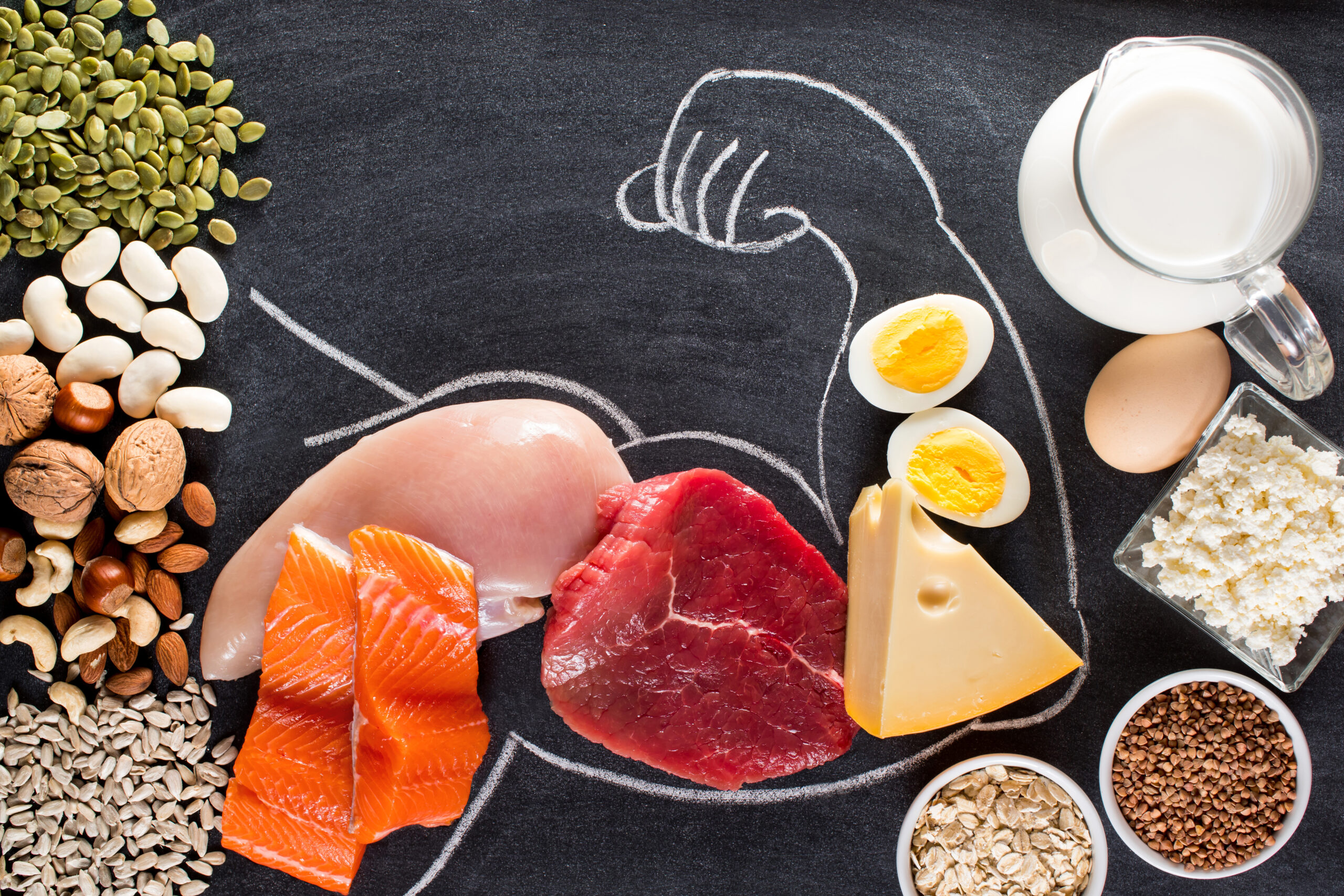Table of Contents

Understanding your exact protein needs could be the missing piece in your health puzzle, especially as research now suggests the standard recommendations may be too low for optimal aging.
At a Glance
- Current research suggests many adults need more protein than the standard RDA of 0.8g per kg of body weight
- For adults over 40, higher protein intake (1.0-1.5g/kg daily) helps preserve muscle mass and support healthy aging
- Protein should be distributed evenly throughout the day, with 15-25g per meal for optimal muscle maintenance
- Both animal and plant-based protein sources can meet needs when consumed in a balanced diet
Why Protein Matters More As You Age
Protein isn't just for bodybuilders and athletes. This essential macronutrient serves as the building block for nearly every tissue in your body, supporting immune function, hormone production, enzyme activity, and critically for adults over 40, muscle preservation. Most Americans consume enough protein to prevent deficiency, but mounting evidence suggests the standard Recommended Dietary Allowance (RDA) of 0.8 grams per kilogram of body weight may be insufficient for optimal health, especially as we age. After 40, the body naturally begins losing muscle mass—a condition called sarcopenia—at a rate of approximately 3-8% per decade, with the decline accelerating after age 60.
The Institute of Medicine recommends adults get 10% to 35% of daily calories from protein, but recent studies indicate specific gram amounts based on body weight are more effective than percentage-based recommendations. A 2019 review suggests 1.3g to 1.8g per kg of body weight daily may be optimal for preventing age-related muscle loss—significantly higher than the standard RDA. This increased need reflects the body's declining ability to efficiently synthesize muscle protein with age, requiring more raw materials to maintain existing tissue.
Dr. Schoenfeld (@BradSchoenfeld) highlights that for optimal muscle health, people engaged in resistance training should consume 1.6 - 1.8g/kg of protein daily, surpassing standard guidelines, and bodybuilders might benefit from pushing to 2.2g/kg.
He also sheds light on… https://t.co/OGupxCRGvG
— Dr. Rhonda Patrick (@foundmyfitness) February 7, 2024
Calculating Your Personal Protein Needs
One size doesn't fit all when determining protein requirements. Your individual needs depend on several factors: age, physical activity level, health status, and personal goals. For healthy adults over 40 with minimal physical activity, aim for at least 1.0-1.2g of protein per kg of body weight daily. If you're regularly active (walking, gardening, light exercise), increase to 1.2-1.5g/kg. Those engaged in strength training or more vigorous activities may benefit from 1.5-2.0g/kg to support muscle recovery and maintenance.
To calculate your needs, convert your weight to kilograms (divide pounds by 2.2) and multiply by your appropriate factor. For example, a moderately active 65-year-old weighing 170 pounds (77kg) would aim for approximately 92-116 grams of protein daily (77kg × 1.2-1.5g/kg). While this may seem high compared to conventional wisdom, research increasingly supports these higher intakes for maintaining muscle mass, bone density, and metabolic health during aging. Upper limits generally suggest not exceeding 2g/kg unless under specific medical or athletic guidance.
Timing and Distribution Matter
Perhaps as important as total daily protein is how you distribute it throughout the day. Traditional eating patterns often concentrate protein at dinner, leaving breakfast and lunch relatively protein-poor. This uneven distribution fails to maximize muscle protein synthesis, which requires regular stimulation. Research suggests consuming 15-25 grams of high-quality protein at each meal creates an optimal environment for muscle maintenance and repair, particularly important for adults over 40 experiencing age-related anabolic resistance.
For those engaging in physical activity, consuming 15-25 grams of protein within two hours after exercise further enhances muscle recovery and adaptation. This post-workout window represents an opportunity to maximize the benefits of both exercise and nutrition. Practical strategies include adding Greek yogurt to breakfast, including lean protein at lunch, and ensuring dinner includes an appropriate protein portion. Protein-rich snacks between meals can help meet higher intake goals while maintaining the even distribution pattern that benefits muscle health.
Quality and Source Considerations
While quantity matters, protein quality deserves equal attention. Proteins contain varying amounts of essential amino acids—particularly leucine, which triggers muscle protein synthesis. Animal sources generally provide complete protein profiles with all essential amino acids, while plant sources may require strategic combinations to ensure completeness. Both can effectively meet protein needs when properly planned. For omnivores, emphasize lean options like poultry, fish, eggs, and dairy to minimize saturated fat intake. Plant-based eaters should focus on combining legumes, whole grains, nuts, and seeds to create complementary amino acid profiles.
Canada's Food Guide suggests including protein in all meals and filling ¼ of your plate with protein foods, favoring plant-based options when possible. This balanced approach ensures adequate intake while promoting dietary variety. Practical protein-rich foods include Greek yogurt (15-20g per cup), eggs (6g each), chicken breast (30g per 3oz), lentils (18g per cup), cottage cheese (28g per cup), and tuna (20g per 3oz). For those with higher needs or difficulty consuming sufficient food volume, protein supplements can serve as convenient additions to whole food sources.
AD
Most Recent
AD
